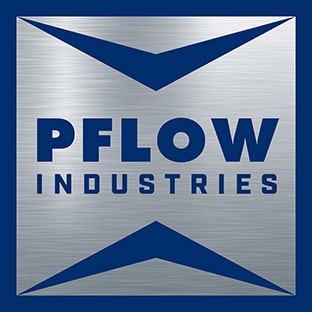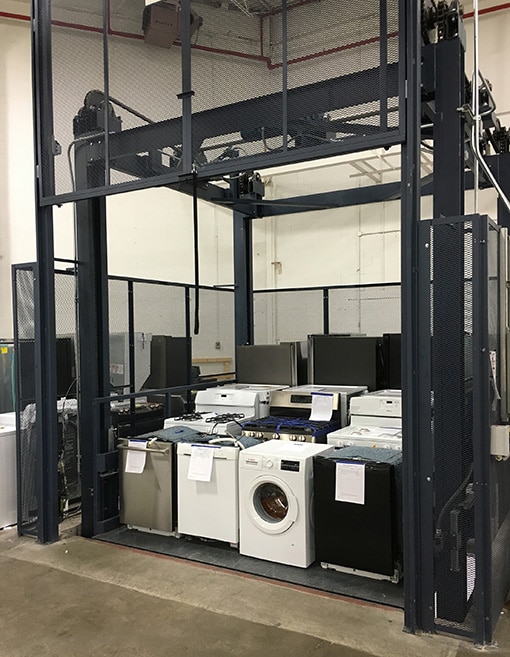According to the National Safety Council, forklifts were the source of 78 work-related deaths and 7,290 nonfatal injuries involving days away from work in 2020, with many of the injuries and fatalities caused by people being struck by falling materials.
These accidents are not inevitable. Any time you are lifting uncontained loads, there is a potential for the load to become unstable and fall onto workers below. As an employer, or someone who is responsible for workplace safety, there is an alternative to forklifts that can increase both worker safety and productivity.
A vertical material lift, or vertical reciprocating conveyor (VRC), can play an essential role in keeping people safe from injury in the workplace.
Here are five benefits of using material lift:
1. Reduce the Risk of Worker Injury
A vertical conveyor can reduce the chances of worker injury and death in some instances.
According to studies, manufacturing workers are at higher risk of disorders that affect the:
- Muscles
- Nerves
- Blood vessels
- Ligaments
- Tendons
This is because their jobs involve lifting heavy loads and objects on a day-to-day basis. Vertical material lifts can help prevent some of these injuries and disorders while reducing the overall number of workers’ compensation claims.
The use of material handling equipment such as a forklift requires the operator to be attentive and skilled. As most industrial accidents often occur when workers are tired, distracted, or not properly trained, the use of a VRC can provide a solution that can make your material handling applications safer, more efficient, and more productive than using a forklift or requiring workers to manually carry materials between floor levels.
Read More: Mezzanine Lift vs. a Material Lift – Learn the Difference
2. Protect Products and Goods
When workers have to carry heavy materials by hand, the chances of accidentally dropping them are much higher. That means your products are more likely to get damaged.
Material lifts can reduce the chances of damage to your products. Your workers simply place boxes, containers, or pallets inside the lift and press a button—it’s as simple as that!
3. Increase Efficiency, Safety, and Productivity
Manually moving boxes and carry heavy objects between floor levels is not only time consuming, it can also lead to worker fatigue and injury. As the day goes by, the rate at which workers can manually transport materials between floors slows, making this a very inefficient way to move materials. Because a VRC is easy to load, unload, and operate, it can increase productivity by removing strenuous physical labor.
Vertical reciprocating conveyors also come with a wide range of advanced, certified safety features that help protect both workers and materials. This includes:
- Conforming to ASME B20.1 Safety Standards
- A limit switch that controls travel of the carriage
- Safety cams that prevent carriage descent in the unlikely event of a chain failure.
- Chain sensors that shut down the lift if chain tension is lost
4. A Material Lift Can Help You Increase Revenue
An increase in material movement efficiency and worker productivity leads to higher revenue.
Installing a VRC in your facility allows workers to move materials to one or multiple floor levels in a safe, fast, and efficient manner, allowing them to focus on other revenue-generating activities. VRCs are also less costly to install, operate, and maintain than elevators.
5. Customized to Fit Your Needs
Vertical reciprocating conveyors are highly customizable—they can be installed in an unused elevator shaft, next to a balcony or mezzanine, next to a new or existing pick module, through a floor, even outside!
Engineered to the customer’s exact lifting requirements, VRCs also provide a space-saving solution to move materials, especially when compared to inclined conveyors or freight elevators.
Hydraulic, mechanical, package handling, and fully automated systems are available and are designed to meet your lifting needs.
Choose the Best Lift for Your Company at PFlow Industries
PFlow Industries VRCs (also known as material lifts) are economical and versatile and can be engineered to accommodate almost any load weight/size, vertical lifting speed, or high-capacity lifting needs. PFlow VRCs can also be designed as part of an automated conveyor system. Best of all, PFlow guarantees ASME B20.1 code compliance for each of our lifts.
Improve productivity, increase safety, and save money with a vertical reciprocating conveyor from PFlow Industries. Learn more below about the two different types of VRCs and which one is right for your material handling application.

